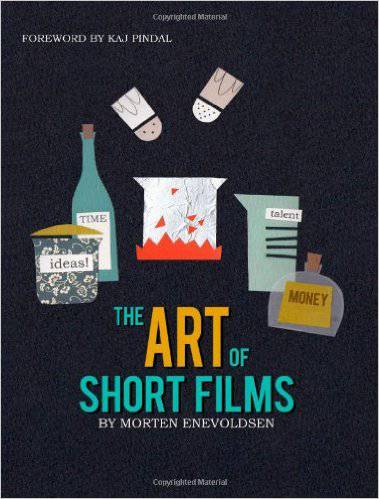Book Review: The Art of Short Films 1
Most animation enthusiasts will have a passion for two things; animated short films and The Art Of… books. Short films are created by students, professionals and budding enthusiastic animators alike, some on a relatively high budget with large animation crews, others the complete opposite. The short animated film is unlike major feature animations – they are produced in many new and different ways, utilising different styles, funding and direction. Short films are often created from one person’s vision, from students and independent directors to established commercial studios. Once finished, they often ride the animation festival circuit until being bought for a compilation DVD or being hosted on the web.
Although the animated short film may not be acknowledged by the general public as much as it is by the animation and arts world, smaller films are becoming more successful through word of mouth, the internet and crowd funding. Even major television channels such as Channel Four still occasionally air short animated films. The Art of Short Films 1 is in itself a small project, the editor Morten Enevoldsen producing the book by gathering art and documentation of the films from the filmmakers themselves. He allows each artist to write their own chapters, describing in detail the process of making their films with artwork, background designs and storyboard contributions. Essentially it is a condensed directory of The Art of… books, for 31 short films.
Such books are mostly produced for larger animation companies like Disney, Dreamworks, Laika, Pixar and Studio Ghibli. The magic of seeing the professional work by these well-known companies is always exciting for any artist or animator. The smaller animators, however, are often untouched by publishers, with work posted to the internet having become the major source of animation art from larger and smaller productions which can sometimes remain completely unseen until the film is released.
The Art of Short Films 1 not only acknowledges the hard work and perseverance of the smaller underfunded animators, it allows the readers to explore a whole new dimension to the ‘making-of’ side of the film. As well as shedding light on the various stages and processes that animated short films go through, it also explores the extensive design and illustration work behind them; From production sketches to full renders of characters and backgrounds, all of which are fully inspiring to view.
As well as fantastic artwork, each film is packed with design notes, colour scripts et al, along with small introductions and notes about the process and how the film started, developed and bloomed into the final product from the animators and directors. The book also examines how – given these are smaller companies – they achieved what they did on the budgets they had, with means of funding ranging from animation film schools to festivals and government bodies.
The book remains unbiased between 2D, Stop-Motion, Hand-Drawn, 3D and Digital, promoting a colourful variety of wonderful short films. It is highly recommended to anyone venturing into the world of animation, makers of short indie films or even those working on high-end features who might be seeking something a little bit different from mainstream short films.
To find out more, visit the projects website theartofshortfilms.com or buy the book here.
Items mentioned in this article:



